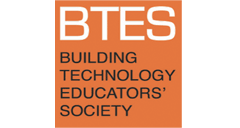Teaching Structures Online: Finding Opportunities for Tangible Engagement
Author ORCID Identifier
DOI
https://doi.org/10.7275/xf12-z345
Abstract
Faced with increasing demand but limited flexibility within the academic year, the School of Architecture at Clemson University developed and delivered an online version of its undergraduate Structures 2 course during the summer of 2018. This shift in timing and format presented a range of challenges, most significantly the compressed schedule (six weeks to deliver fifteen weeks of content), and the desire to maintain engaged, experiential learning despite the detachment and asynchronicity introduced by the online setup.
With respect to this remoteness, it proved fruitful to turn the challenge on its head and instead identify opportunities afforded by the geographic distribution of the students. This resulted in a unique case study project devised to capitalize on diverse summer experiences and dovetail with student internships. The project aimed to develop a clearer understanding of the collaborative relationship between practicing architects and structural engineers through shadowing and interviewing both parties. In conjunction, students identified a current project in the office of these professionals as a reference point for the interactions being described. This provided a foundation for discussions of scope, contracts, design stages, workflows, and special coordination. The case study also provided a vehicle for integrating basic course content relating to material systems, hierarchy, load path, and connections, all while developing other key competencies ranging from interpreting construction drawings to synthesizing architectural and structural information.
This paper details the first offering of the online Structures 2 course at Clemson University – its organization, its content, and the unique project devised as a thread tying everything together. The paper considers the scope of our students’ unfamiliarity with the architect / engineer relationship, and how a project like the one described can address this need. It is punctuated throughout by examples of student work, and includes detailed student feedback concerning the course and its methods.
Recommended Citation
Albright, Dustin
(2019)
"Teaching Structures Online: Finding Opportunities for Tangible Engagement,"
Building Technology Educator's Society: Vol. 2019
Caryn Brause, Peggi L. Clouston, Naomi Darling (Eds.), Amherst, MA, 2019.
https://doi.org/10.7275/xf12-z345
Available at:
https://scholarworks.umass.edu/btes/vol2019/iss1/4

